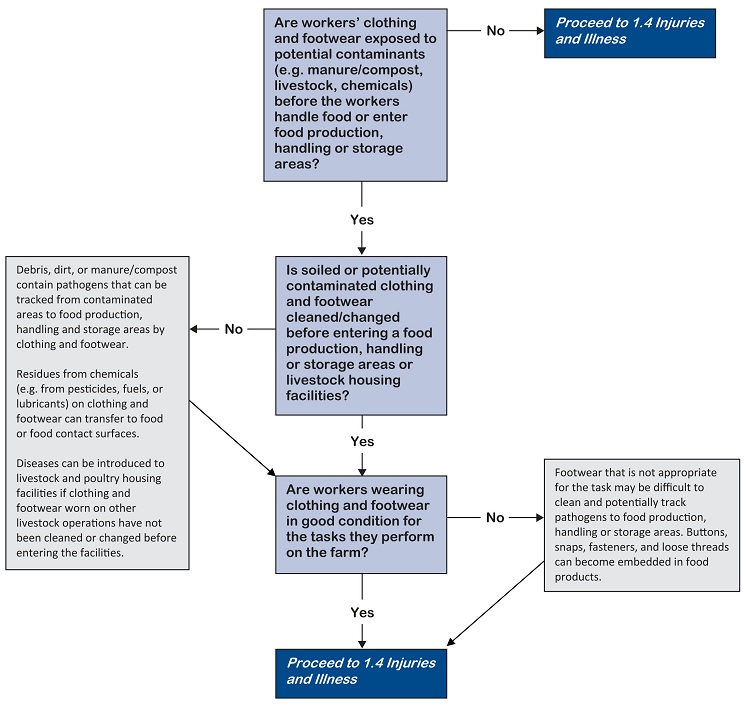Worker policies - 1.3 Clothing and footwear
Clothing and footwear that are contaminated, dirty or not in good condition can contaminate food, livestock, poultry, inputs, packaging material and food contact surfaces.

This good agricultural practice applies to farms with workers who milk livestock or handle livestock, eggs, honey, fruits or vegetables. All farms, however, need to consider whether clothing and footwear pose a food safety hazard to food produced on the farm.
What needs to be done
Make sure all workers wear suitable clothing and footwear.
How to do it:
- Make sure all workers wear suitable clothing (e.g. coveralls, aprons, footwear) when they enter the farm, field, barn or packinghouse
- Make sure workers’ clothing and footwear are durable, well maintained and easy to clean
- Make sure clothing and footwear are not worn or taken into areas where they have the potential to cause cross-contamination. For example, don’t allow workers to shovel manure and then walk into a production or packing area without changing clothing or footwear
- Make sure workers understand the principles of cross-contamination and the importance of wearing and cleaning proper clothing and footwear
- Provide clearly marked areas so there is no confusion about where people need to remove their off-farm clothes and footwear and put on designated farm clothing and footwear
- Provide a dedicated area for workers’ personal effects separate from food handling areas and toilet facilities
- Provide facilities and materials to clean footwear (for example, boot wash stations, brushes) for workers where appropriate
- Use designated clothing and footwear for specific tasks where clothing or footwear cannot remain clean (for example, pesticide application or manure spreading, and have them stored in designated areas
In general
- Use appropriate signage to remind workers to follow proper clothing and footwear practices for designated areas on the farm
- Designate someone to ensure workers are following clothing and footwear practices
If you need an audit
Be prepared for an auditor to observe and review:
- Appropriate storage areas and cleaning facilities for clothing and footwear available to workers
- Dedicated storage areas for workers’ personal effects separate from food handling areas and toilet facilities
- Written policies for worker clothing and footwear
- Training records
Laws and regulations
There are specific agricultural laws that affect food safety requiring persons to wear specific clothing or footwear on-farm. Generally, these requirements are laid out in laws regarding the processing of meat, fish and other food products or egg-grading stations, which are outside the scope of this document:
- The Occupational Health and Safety Regulation, Reg. 296/97, s. 8.8 under the Workers Compensation Act states that employers/supervisors must ensure appropriate personal protective equipment is available to workers, properly worn when required, and properly cleaned, inspected, maintained and stored
- The Milk Industry Standards Regulation, Reg. 464/81, s. 10 (6) under the Milk Industry Act requires persons who milk or care for milk to be cleanly dressed and personally clean
- Pesticide labels are legal requirements under the Pest Control Products Act (Canada) 2002, c. 28. Requirements to wear specified personal protective equipment when handling pesticides should be followed
